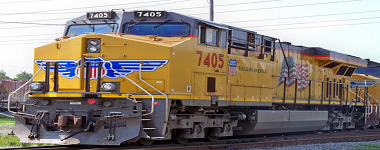Week 38 of 2018 shows same week total rail traffic (from same week one year ago) improved according to the Association of American Railroads (AAR) traffic data.

Analyst Opinion of the Rail Data
Rail continues to have relatively strong growth.
We review this data set to understand the economy. If coal and grain are removed from the analysis for carloads, this week it expanded 2.2%. We primarily use rolling averages the analyze the data due to weekly volatility – and the 4 week rolling average for the intuitive sectors declined from 9.0 % to 8.4 %.
Intermodal transport growth remains strong year-over-year.
The following graph compares the four-week moving averages for carload economically intuitive sectors (red line) vs. total movements (blue line):
.This analysis is looking for clues in the rail data to show the direction of economic activity – and is not necessarily looking for clues of profitability of the railroads. The weekly data is fairly noisy, and the best way to view it is to look at the rolling averages (carloads [including coal and grain] and intermodal combined).
A summary of the data from the AAR:
For this week, total U.S. weekly rail traffic was 567,078 carloads and intermodal units, up 4.9 percent compared with the same week last year.
Total carloads for the week ending September 22 were 272,615 carloads, up 4.2 percent compared with the same week in 2017, while U.S. weekly intermodal volume was 294,463 containers and trailers, up 5.7 percent compared to 2017.
Seven of the 10 carload commodity groups posted an increase compared with the same week in 2017. They included petroleum and petroleum products, up 3,934 carloads, to 13,131; grain, up 3,689 carloads, to 23,297; and coal, up 3,490 carloads, to 87,890. Commodity groups that posted decreases compared with the same week in 2017 were metallic ores and metals, down 1,241 carloads, to 24,132; nonmetallic minerals, down 882 carloads, to 38,505; and motor vehicles and parts, down 822 carloads, to 17,001.
For the first 38 weeks of 2018, U.S. railroads reported cumulative volume of 9,976,253 carloads, up 2 percent from the same point last year; and 10,532,388 intermodal units, up 6 percent from last year. Total combined U.S. traffic for the first 38 weeks of 2018 was 20,508,641 carloads and intermodal units, an increase of 4 percent compared to last year.












Leave A Comment